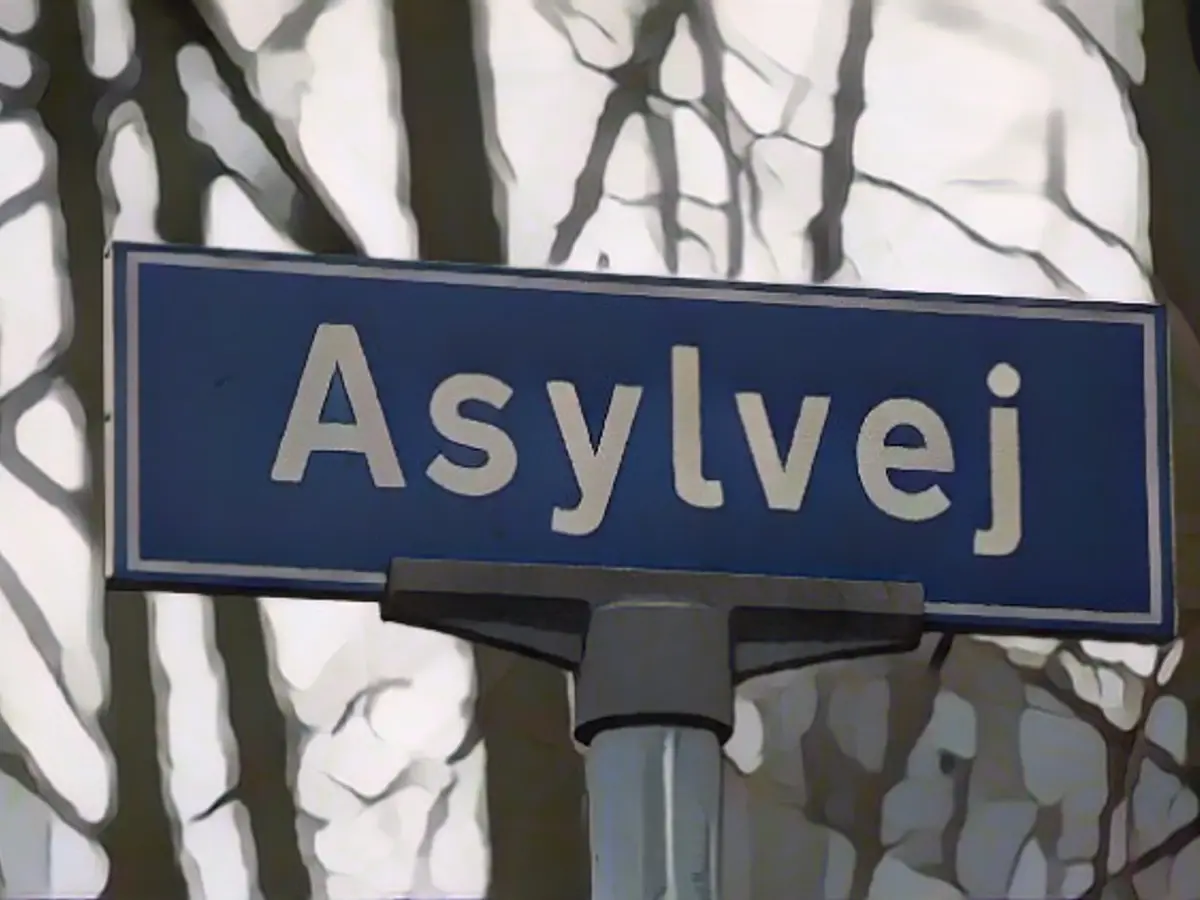Denmark likes to openly deter asylum seekers
The Danish asylum policy is clear: it consists of scaring people away, as those responsible openly admit. Many in Germany consider this to be worth emulating. However, the model is not suitable for other countries due to EU treaties.
If you want to apply for asylum in Denmark, you should be able to walk well. The only reception center for refugees is located around 25 kilometers outside of Copenhagen on a military training area in Sandholm. The bus from the former barracks to the nearest S-Bahn station runs every 30 to 45 minutes during the day. You can also walk the four kilometers in that time. It is only half as far to the Sjælsmark deportation center, which is run by the penal system. And the Ellebæk deportation center, which has been criticized by the Council of Europe's anti-torture committee, is only a few steps away from the reception center.
For Michala Clante Bendixen from Refugees Welcome Denmark, the location of the three sites is emblematic of Danish refugee policy. Unlike in Germany, there is a far-reaching political consensus here to allow as few asylum seekers as possible into the country. In 2019, the parliament passed a so-called paradigm shift with a majority of right-wing populists, conservative parties and social democrats, according to which residence permits for refugees are generally limited in time and should not be extended or revoked if possible. Benefits for asylum seekers have been cut, residence and registration requirements tightened and repatriation to the country of origin made easier.
In addition, the government has placed advertisements in the Middle East warning refugees against Denmark and has enforced a jewelry law that allows the police to take valuables from asylum seekers in order to finance their stay in Denmark. A ghetto law doubles the penalties for people living in certain residential areas, among other things. This is intended to help combat parallel societies.
The Danish refugee policy consists of scaring people away, says Bendixen. The jewelry law, for example, does not work in practice and is hardly ever applied. "It's pure symbolic politics." The government was probably more interested in the external effect.
"This needs to be celebrated"
The driving force behind this approach was not only the right-wing populist Danish People's Party, which crashed in the elections following the paradigm shift, but also the then Minister for Foreigners and Integration, Inger Støjberg from the right-wing liberal party Venstre. She celebrated the 50th tightening of immigration rules in 2017 with an anniversary cake and the words: "This must be celebrated."

Advocates of a tougher asylum policy in Germany like to praise the figures from Denmark as exemplary. According to the Copenhagen Ministry for Foreigners and Integration, 4597 people applied for asylum in Denmark last year, compared to more than 244,000 applications in Germany. To make the figures comparable: Germany has around 14 times as many inhabitants as Denmark, but 53 times more asylum seekers.
Three groups of refugees
Anyone who registers as an asylum seeker in Denmark usually ends up in Sandholm first and is interviewed. The immigration authorities then sort out the people who are registered in countries under the Dublin Agreement. Denmark does not feel responsible for these refugees.
The others are divided into three groups: Applicants who can obviously be rejected, applicants who need to be examined more closely and people with plausible grounds for asylum. Recognized refugees are assigned a place to live, usually for an initial period of three years, often in an asylum center that is as remote as Sandholm. The centers have a kindergarten.
Minors of school age receive schooling, first in the asylum center and as soon as they are fit for it in normal schools in the area. Danish lessons are available for adults. Even in Sandholm, many people greet each other in the local language. The residents receive pocket money, which they can supplement if they take on certain jobs.
Deportation after 19 years
Rejected asylum seekers are sent to one of three deportation centers. People whose residence permit has not been extended or whose home country has been declared safe by the Danish authorities also end up there, even if they have been living in Denmark for years, speak Danish, have a job and are supporting their family. The case of the Russian Larissa Okulova, whose residence permit was revoked after 19 years following the death of her husband, who was employed in Denmark, recently made headlines.
The Danish authorities offer rejected asylum seekers 20,000 kroner if they waive their right to appeal. But very few accept this offer. Those who do not give in can expect another "motivational measure" - being sent to Ellebæk, where the head of the Council of Europe's anti-torture committee has said that even prisons in Russia are better.
Støjberg responds to such criticism by saying that she wants to make life as unbearable as possible for the unwanted inmates of deportation centers in Denmark. She left Venstre in a dispute over the excesses of her immigration policy and founded the right-wing populist Danish Democrats, which are now almost three times as strong as the Danish People's Party in the polls.
Those obliged to leave the country disappear
However, Denmark is not suitable as a model for other EU states in legal terms alone. At the beginning of the 1990s, the government at the time negotiated special rules allowing Denmark to issue guidelines for border controls, asylum, immigration and visas that deviate from the EU treaties. Other EU states cannot do this. Nevertheless, the country is far from being able to deport everyone who is required to leave the country. The government in Syria, for example, is not cooperating, says Bendixen. Deportations to Sudan, Iran, Gaza and Myanmar are also practically non-existent. So people stay in Ellebæk and other centers, claim other grounds for asylum or are even classified as tolerated after 18 months under certain circumstances.
However, many prefer not to take the chance. According to Refugees Welcome, most of those required to leave the country leave before they end up in Ellebæk. In 2022, there were 548 deportees in Denmark. Of these, 222 were deported. Most of the other 300 or so disappeared from the system at some point, went into hiding or tried to do so in Germany, for example.
Bendixen calls Ellebæk part of the Danish policy of deterrence against refugees. However, this only works as long as other countries do not adopt the recipe. If the neighboring countries take a similar approach, the European refugee policy will be like the game "musical chairs". "There are fewer and fewer chairs, but the number of refugees will not decrease as a result. They are in Europe and are crowding into the ever fewer free spaces."
Read also:
- Year of climate records: extreme is the new normal
- Precautionary arrests show Islamist terror threat
- SPD rules out budget resolution before the end of the year
- Numerous oil, gas and coal lobbyists at climate conference
- Under the EU's Dublin Agreement, Denmark does not consider itself responsible for processing asylum applications from individuals who have already registered in other member states.
- The Danish government's asylum law includes the possibility of taking valuables from asylum seekers to finance their stay in Denmark, a practice criticized by the Council of Europe's anti-torture committee.
- According to Michala Clante Bendixen from Refugees Welcome Denmark, the Danish asylum policy, which includes deterrence measures like the location of asylum centers and jewelry law, is more about symbolic politics and external effects than tangible impacts.
Source: www.ntv.de








